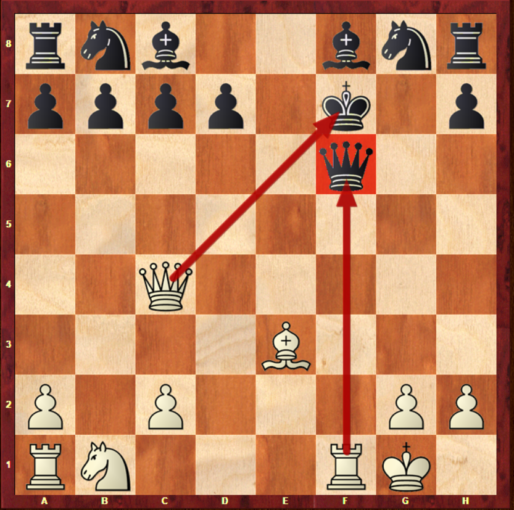
King’s Gambit
This opening is associated with the Renaissance. It has been loved by players for many centuries because it often leads to dynamic games. You need to see it just once to grasp its beauty. A cascade of victims and non-standard ideas look impressive on the board. But nowadays, the King’s Gambit is rarely used by high-level champions. Besides, an AI-based opponent can quickly block this strategy and destroy the White’s plans of winning easily.
But there are some exceptions. Such world-known champions as Vasyl Ivanchuk, Ian Nepomniachtchi, Magnus Carlsen, and Richard Rapport sometimes use the gambit. And so do many lower-ranked players! If Black is not prepared for such an opening launched by White, they can end up with nothing very quickly. Previously, materialism didn’t dominate our way of thinking. Instead, romanticism set its standards everywhere, including the black-and-white board. Everyone played the epic King’s Gambit, even the strongest ones.
We recommend that only advanced players with an in-depth tactical vision and passion for unusual positions use the King’s Gambit. Black may be blind to the main ideas behind the trick, typical victims, and the upcoming danger. This will lead to a disadvantageous situation for them or even a defeat! But if you use this sharp opening without learning other basic strategies, it’s a mistake. After all, even the King’s Gambit comes in different shapes. You should study all variations to be prepared for any twist in the match.
One of the most aggressive openings
After the mutual struggle for the center (1.e4-e5), White responds with 2. f4. What for? We sacrifice a pawn, but then win over the center by moving to d4. Our further goal is to eat the f4-pawn and get to the f7-pawn. This will endanger the opponent’s king!

The key move to set the variation in motion is Black’s decision to eat our pawn. Thus taking the bait. The best response by White is to send the knight to f3. It’ll discourage the black queen from jumping to h4.

Black can simply send the bishop to c5. But after you occupy the d4-square, the initiative is yours.

Black can also try to back up their pawn with a bishop to d6. Force it away with a pawn. And then hit the opponent’s pawn in the center. You’ll get an advantage in the opening thanks to center domination and active positions of the pieces.

The strongest move Black can make is a pawn to g5 to support the soldier on f4. White can answer with h4. Or even more aggressively – a bishop to c4 aiming at the f4-pawn.

4…a g4-move is too dangerous. Better opt for castling to seize the initiative, it is the key to success!

Black keeps trying till the end with a pawn to g3. But going this way is objectively very dangerous. We push our queen to f3 for a subsequent attack.

Black protects the f4-pawn with the queen, and White continues to sacrifice their material. In this case a pawn. This is necessary to free the vertical for heavy pieces.

Boom! Put the bishop (8. Bf7) in danger to further open the black king. We’ve already sacrificed a couple of pieces for the King’s Gambit, and it’s only the beginning!

Give way to the c1-bishop by sacrificing the pawn (place it to d4)!

If Black gets greedy and takes the bait, send your bishop to e3. The opponent just can’t eat it, so you gain precious tempo.

But Black still wants to devour someone, so they jump at the b2-pawn, threatening our rook. It’s all in vain: White already has a winning position after 11.Qf4. Don’t forget: we play without 2 pieces!

The black queen protects the king, inviting you to exchange them. We’re against it! Give a check and then threaten the strongest opponent’s piece with a rook. So, you’ve managed to keep the dangerous initiative and win the match!

Of course, there are still many other variations of the King’s Gambit. The theory has developed incredibly over the centuries. But we hope that what we’ve shown will help you feel the spirit of the opening. Now you see these positions are sharp and interesting to explore!
Keep on playing chess!


I consider something really special in this website.